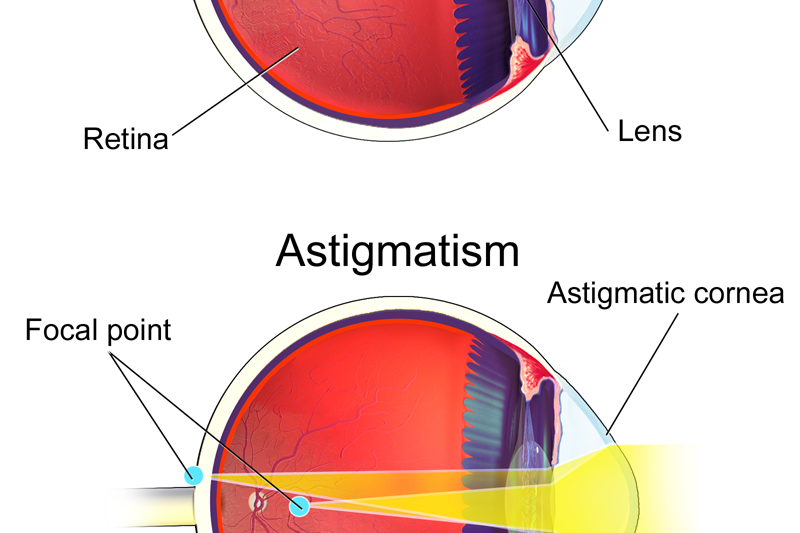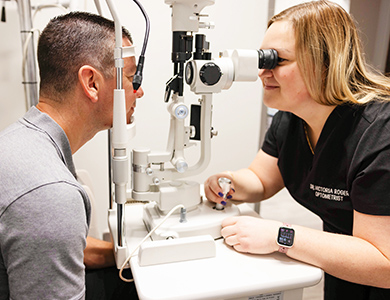
Those with astigmatism may find looking at objects both near and far to be like looking into a funhouse mirror. Astigmatism is a refractive error that occurs when the cornea and lens aren’t smooth and evenly curved. This causes light rays to not bend properly and results in distorted vision.
There are two types of astigmatism: corneal astigmatism and lenticular astigmatism. As suggested by the names, each signifies whether it’s the cornea or lens that has a distorted shape.
Types of Astigmatism Diagnostic Tests
There are a few astigmatism charts and dials that you can find online to identify potential signs of astigmatism. These include a half dial, astigmatic dial, and blocks of vertical and horizontal lines. These tests are all fairly similar and taken in the same manner. You’ll test one eye at a time and look for differences in the lines. These differences might include darker and lighter lines or thicker and thinner lines.
At-Home Astigmatism Test
To take the following astigmatism test, cover one eye at a time and observe the image. Make note of any thicker or lighter lines. This could be a sign you have astigmatism.
Note: This is not intended for clinical diagnosis, nor is it medical advice. A complete diagnosis cannot be received from an online test alone. Please consult with your eye care professional for additional information on color vision deficiency and for clinical testing.
How Is Astigmatism Treated?
Glasses
Glasses can be a simple option for correcting astigmatism, but they do come with drawbacks. Eyeglasses work well for looking straight ahead but can cause the area around you to appear tilted if you have severe astigmatism. It is likely that you will adjust to this as you wear your glasses more often but if the tilting doesn’t improve you should speak with your optometrist about your prescription and potential alternative treatments.
Contacts
Contacts made to correct astigmatism, called toric lenses, are specially designed to return to the same spot each time you blink. Regular contact lenses will rotate with each blink. You also have the option of hard lenses for more severe astigmatism which helps to reshape your cornea.
Laser Eye Surgery
LASIK or PRK can reshape your cornea to correct astigmatism. This will have the highest upfront cost of other astigmatism treatments and isn’t often covered by health insurance because there are more affordable alternatives.
However, once laser eye surgery is complete you no longer need to worry about buying new contacts or glasses.
If you’re interested in laser eye surgery as a treatment for astigmatism you should consult with your eye doctor to weigh the pros and cons.
When to See a Doctor
If you suspect astigmatism, you should book an appointment with your optometrist. Your optometrist will be able to officially determine if you do have astigmatism and can provide corrective measures if available.
Signs such as blurry vision, double vision, headaches, squinting, and strained eyes are all signs you should see your optometrist.
Concerned about your vision?
Contact us to schedule an appointment





